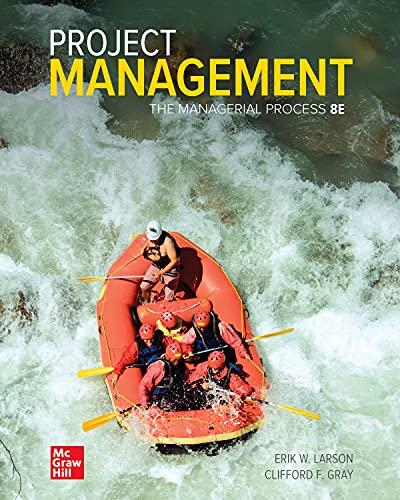Question
As I perused Kerese's presentation, it was evident that the conceptualizations, analysis, and synthesis of key research from the learning resources from this week were
As I perused Kerese's presentation, it was evident that the conceptualizations, analysis, and synthesis of key research from the learning resources from this week were utilized. The use of Battilana and Casciaro (2012) provided a foundation for the author's proposed contingency theory, which examined the impact of structural closure in a network on initiating and accepting change in organizations. Nowadays, change management is crucial for thriving businesses to adapt, as staying current requires change.
Upon review, the presentation conveyed a coherent overview of the required topics and a thorough analysis of their impact on the development of human resources, organizational strategy research, corporate practices, and efforts for social change. Terese was mindful of Hanley (2007), who examined and provided comprehensive guidance on how to implement strategic and operational plans in a banking context successfully. Strategic projects often fail to achieve desired outcomes due to communication failures, organizational culture, and a lack of tracking and measuring results. Some successful approaches for execution include simplifying ideas, seeking employee feedback, evaluating return on investment, and creating a project management office.
Finally, undoubtedly, the presenter made a meaningful academic argument and interpreted the resources ably to elucidate an understanding of the critical concepts found in the resources. Heartiest commendations, Kerese; job well done with this presentation.
References
Battilana, J., & Casciaro, T. (2012). Change agents, networks, and institutions: A contingency theory of organizational change.Academy of Management Journal, 55(2), 381-398.
Hanley Jr., C. A. (2007).The execution challenge: Translating strategy into action. Bank Accounting & Finance(08943958),20(6), 17-20
2-week unit's Learning Resources
Battilana, J., & Casciaro, T. (2012). Change agents, networks, and institutions: A contingency theory of organizational change.Academy of Management Journal, 55(2), 381-398.
Gorman, M. F. (1998). Sante Fe railway uses an operating-plan model to improve its service design.Interfaces, 28(4), 1.
Greene, A., & Kirton, G. (2011). Diversity management meets downsizing: The case of a government department.Employee Relations, 33(1), 22-39.
Hanley Jr., C. A. (2007). The execution challenge: Translating strategy into action. Bank Accounting & Finance(08943958), 20(6), 17-20.
Herrero de Egaa Espinosa de los Monteros, A., & Bravo, C. S. (2012). Case study: Downsizing strategy influence on the structure of the firm.Links to an external site.Management: Journal of Contemporary Management Issues,17(1), 75-92.
Liviu, I., Emil, C., Irina, S., & Delia, B. (2009). The use of 360-degree feedback methodLinks to an external site.. Annals of the University Of Oradea, Economic Science Series, 18(4), 300-306.
Muafi. 2009. The effects of alignment of the competitive strategy, culture, and role behavior on organizational performance in service firms is discussedLinks to an external site.. International Journal of Organizational Innovation, 1(4), 74-101.
Murphy, K. S., & Williams, J. A. (2010). Human resource management high-performance work practices and contextual setting: Does industry matter? A comparison of the U.S. restaurant sector to the manufacturing industry. Journal of Foodservice Business Research, 13(4), 283-303. https://doi.org/10.1080/15378020.2010.524542
All course members should respond to the colleagues' postings by addressing the following summative considerations that pertain specifically to the topics for this 2-week unit:
- In what ways do the readings provided in this 2-week unit's Learning Resources and those identified by you and your colleagues answer important "so what?" questions in the field of human resources?
- How are these readings potentially valuable to research in the field?
- Are there any important gaps (i.e., contradictions, arguments, disagreements, or areas of divergence) within this set of readings that point to potential topics for future research?
- How would you follow up to extend or explore these gaps?
Please note that, for each response, include a minimum of one appropriately cited scholarly reference.
Step by Step Solution
There are 3 Steps involved in it
Step: 1

Get Instant Access to Expert-Tailored Solutions
See step-by-step solutions with expert insights and AI powered tools for academic success
Step: 2

Step: 3

Ace Your Homework with AI
Get the answers you need in no time with our AI-driven, step-by-step assistance
Get Started


